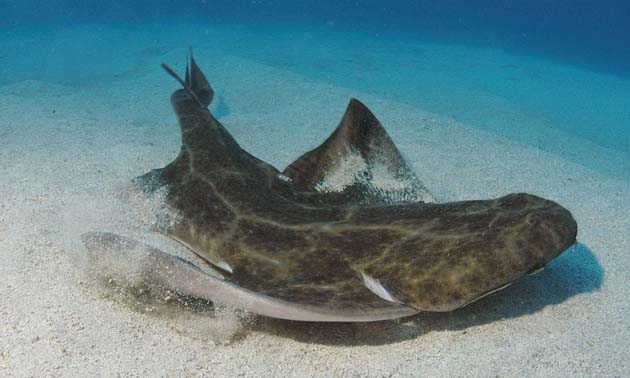Monday, December 13, 2010
December 13, 2010 : Angel Shark
Angel Shark
The angel sharks are an unusual genus of sharks with flattened bodies and broad pectoral fins that give them a strong resemblance to rays. The 16+ known species are in the genus Squatina, the only genus in its family, Squatinidae, and order Squatiniformes. They occur worldwide in temperate and tropical seas. Most species inhabit shallow temperate or tropical seas, but one species inhabits deeper water, down to 1,300 metres (4,300 ft).
While the forward part of the angel shark's body is broad and flattened, the rear part retains a muscular appearance more typical of other sharks. The eyes and spiracles are on top, and the five gill slits are underneath. Both the pectorals and the pelvic fins are large and held horizontally. There are two dorsal fins, no anal fin, and unusually for sharks, the lower lobe of the caudal fin is longer than the upper lobe. Most types grow to a length of 1.5 m (5 ft), with the Japanese angel shark, Squatina japonica, known to reach 2 m. Angel sharks possess extensible jaws that can rapidly snap upwards to capture prey, and have long, needle-like teeth. They bury themselves in sand or mud lying in wait for prey, which includes fish, crustaceans, and various types of mollusks. They are ovoviviparous, producing litters of up to 13 pups.
Although this shark is a bottom dweller and appears harmless, it should be respected due to its powerful jaws and sharp teeth which can inflict painful lacerations if provoked. It may bite if a diver approaches the head or grabs the tail. If they are left alone, they will not attack.
Subscribe to:
Post Comments (Atom)


No comments:
Post a Comment